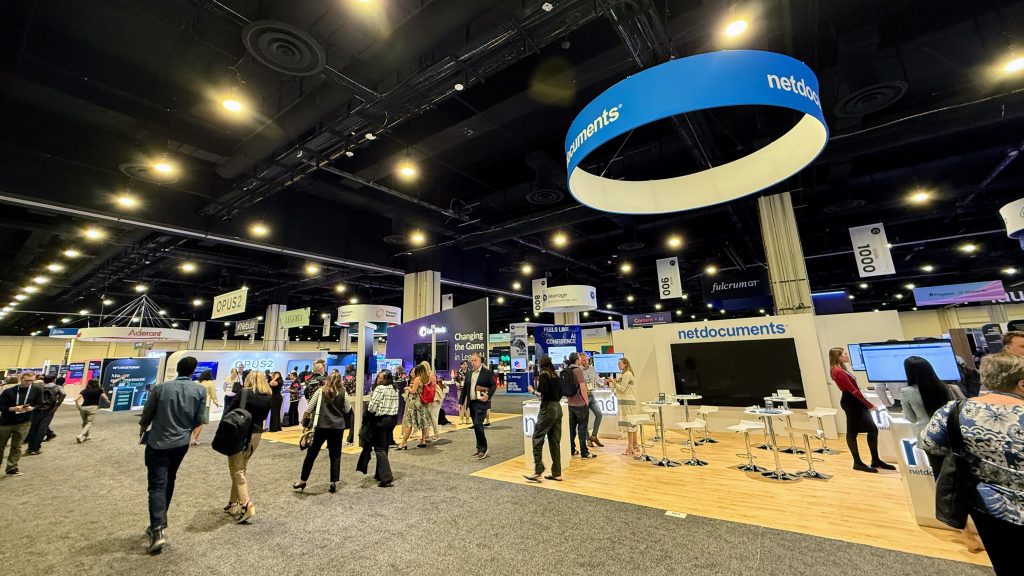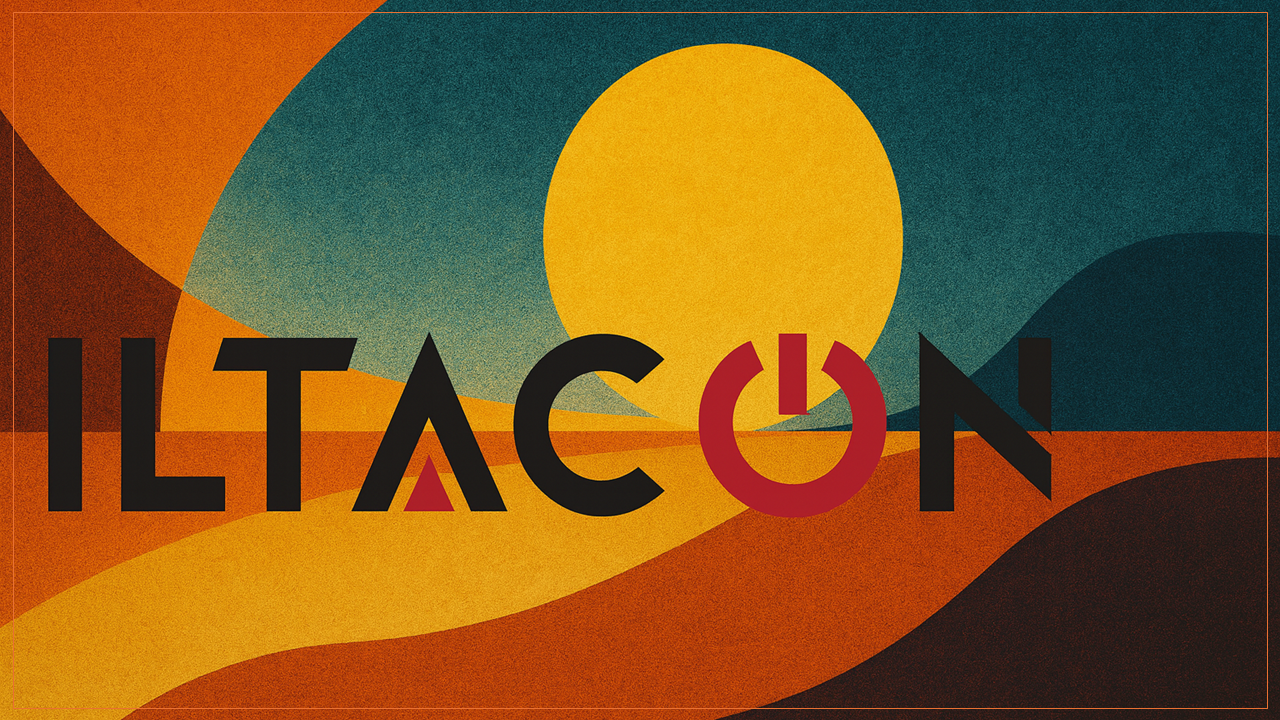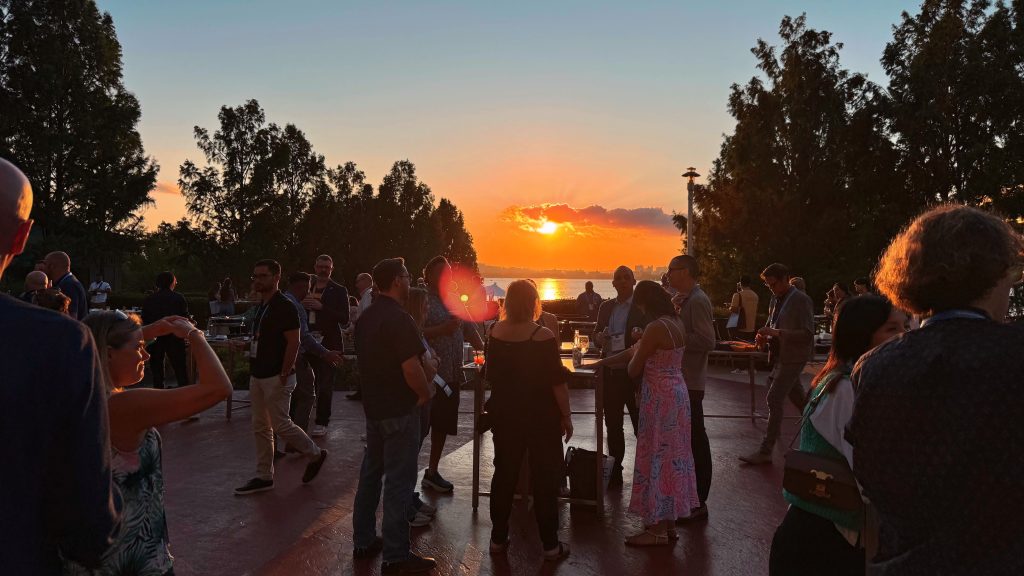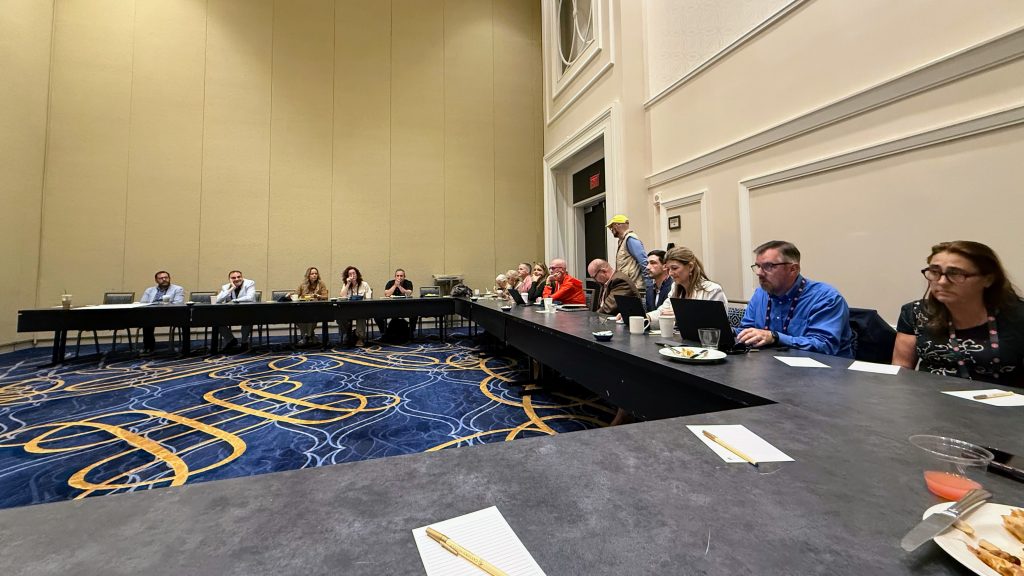Last Friday, Aug. 15, as I began to make my way home from ILTACON 2025, and finally had enough of a break from the conference’s non-stop, four-day flurry of activity to check up on my social media, I took notice of the posts commemorating the 56th anniversary of Woodstock, which, as it happens, began on Aug. 15, way back in 1969.
One post in particular jumped out at me. It featured a grainy photo of Grace Slick at the microphone as Jefferson Airplane took the stage in the early morning hours, declaring to the crowd of nearly half a million: “It’s a new dawn.”
Her words had meaning both literal and figurative. Torrential downpours had repeatedly delayed the band’s set, so by the time they launched into “White Rabbit,” the sun was indeed rising over Max Yasgur’s farm.
But Slick also seemed to be channeling the zeitgeist of a generation – a generation that sensed they were witnessing the dawn of a new era. Music, culture, politics and, yes, even technology, were converging in ways that would reshape society.
The reason those words struck a chord with me on Friday was that they had already been bouncing around in my brain during the days before, without even having been thinking about Grace Slick or Woodstock.
As I had walked the halls of the Gaylord National Harbor where ILTACON took place, I had literally thought to myself, “We are experiencing a new dawn in legal technology.” I had felt, and I am sure others felt, an electric sense of being present at the dawn of something transformative.
A Record-Setting ILTACON
This year’s ILTACON was the largest ever, with roughly 4,600 people from more than 30 countries filling every corner of the Gaylord and spilling out into surrounding hotels, bars and restaurants. But it wasn’t just the size that made it special – it was the energy. Having attended so many ILTACONs over the years that I’ve lost count, I can confidently say this was the most vibrant and dynamic ILTA CON ever.

This year’s conference had a pirate theme, as was reflected in the opening remarks by conference cochairs Donna Frugoli and Brian Clarke.
Of course, the conference’s organizers deserve huge credit for this, particularly cochairs Donna Frugoli, lead application support analyst at Seyfarth Shaw, and and Brian Clark, cybersecurity manager at Porzio, Bromberg & Newman, as well as everyone involved in planning and executing this massive conference. From the programs, to the social events, to the exhibit hall, the conference was a cornucopia of useful information and enriching networking.
But that sense I felt of a new dawn was driven by something greater – it was driven by the zeitgeist, by the transformative moment in which legal tech currently finds itself. As someone who has covered legal tech for 30 years, I cannot remember there ever being a time such as this, when the energy and excitement are raging, driven by generative AI and a new era of innovation and new ideas of the possible.
Let’s face it, for too long, legal tech conferences had fallen into a predictable, if somewhat bland, rhythm. Year after year, the innovation seemed incremental, the breakthroughs evolutionary rather than revolutionary. How many different ways could we package contract lifecycle management? How many variations on e-discovery platforms could the market bear? The legal tech industry seemed to have settled into a comfortable but uninspiring groove.
But this year was different. Wandering the exhibit hall, getting product briefings from vendors, talking with attendees, it was impossible to ignore the fundamental shift happening in legal technology. Gen AI isn’t just creating new products – it is spawning entirely new categories of products that truly are reshaping how legal work gets done.
AI Drives A New Era
Where once we saw new products that provided incremental (and siloed) improvements to how legal professionals work, we now see AI agents that can perform complex, multi-step tasks with unprecedented sophistication. AI technology is not just automating tasks, it is streamlining complete workflows and truly augmenting legal work.
Agentic AI is the buzzword of 2025 and agentic systems were everywhere at ILTACON, promising to streamline workflows across all areas of legal practice. But, perhaps more importantly, these tools are also beginning to address the business side of running a law practice – from client intake and billing to marketing and practice management. The scope of transformation is now beginning to extend beyond the practice of law into the business of law.

There was a lot to be seen in the exhibit hall, where there were 233 vendor booths and 27 startups in the Startup Hub.
During my time at the conference, I witnessed a number of product demos – from companies ranging from major established vendors to fledgling startups – and many of them were not just impressive, but potentially paradigm-shifting.
I’ve already written about some of the ILTACON-timed releases from the major players, including Thomson Reuters’ launch of CoCounsel Legal with agentic AI and deep research, the launch of Protégé General AI by LexisNexis Legal & Professional, and NetDocuments’ launch of AI-powered document profiling and an agentic AI tool for editing documents directly within Microsoft Word.
But perhaps even more inspiring was to wander through ILTACON’s Startup Hub and see the companies that are germinating new ideas for the future of legal tech. I was happy to see some companies there that had previously participated in the Startup Alley I host at ABA Techshow, including this year’s winner, Querious, which is a product unlike anything I have ever seen before, providing lawyers with “conversational intelligence” during online meetings with clients. I urge you to check out all the companies that were in this year’s Startup Hub.
To stretch this whole Woodstock analogy just a bit further, just as the historically powerful sound systems at Woodstock allowed music to reach nearly half a million people, gen AI has the power – or at least the potential – to amplify legal expertise in ways we are only beginning to understand and to democratize access to legal information and analysis.
The Dawn’s Limitation
But here’s where the analogy gets complicated, and where my enthusiasm gets tempered by reality. Woodstock, for all its idealistic messaging about peace, love and social change, was still primarily accessible to those privileged enough to attend. They were mostly white, middle-class young people who could afford to take time away and travel to a farm in upstate New York.
Similarly, the “new dawn” I witnessed at ILTACON is happening largely within the elite circles of legal technology. The 4,600 attendees were predominantly from large law firms, major corporations, and established legal tech companies.
Largely missing from this gathering were solo practitioners, small firm lawyers, legal aid organizations, and access-to-justice advocates – the very people who stand to benefit most from the democratizing potential of AI.
(I’ve written about this issue before: The Justice Gap in Legal Tech: A Tale of Two Conferences and the Implications for A2J.)
In fairness, that is the nature of ILTACON and reflects the composition of ILTA’s membership and supporting sponsors. It is now and has always been an organization focused on larger law firms.
However, now more than ever, the innovations we are seeing in legal tech have the power to level the playing field, to give smaller practitioners access to tools and capabilities that were once prohibitively expensive. If these technologies remain priced for and marketed primarily to Big Law, we will have succeeded only in widening the justice gap rather than closing it.
Extending the Dawn
Grace Slick’s declaration of a “new dawn” at Woodstock became a rallying cry for a generation that believed music and culture could create positive social change. The legal tech community now faces a similar moment of possibility and responsibility.
The AI revolution in legal technology represents more than just another business opportunity – it is a chance to fulfill technology’s long-promised potential to make legal services more accessible and affordable. But this will only happen if we – as an industry and as a community – devote ourselves to ensuring that these innovations reach beyond the legal elites.
This means developing pricing models that work for solo practitioners and small firms. It means creating tools that address the specific needs of legal aid organizations and public defenders. It means building AI systems that can help bridge the access-to-justice gap rather than widen it.
The vendors, investors and legal professionals who gathered at National Harbor have the expertise, resources, and market position to drive this change. But it will require intentional effort to extend this new dawn beyond the comfortable confines of large law firms and major corporations.
A Call to Action
So as I found myself Friday reflecting on both Woodstock and ILTACON, I thought about how moments such as this offer unique opportunities for positive change. Woodstock’s legacy was not just the music – it was its lasting impact on social movements and cultural attitudes that extended far beyond that August weekend.
The legal tech community has a similar opportunity. The AI-driven new dawn that was evident at ILTACON can either remain confined to the elite legal market, or it can become the catalyst for fundamental improvements in how society accesses justice.
Grace Slick was right – it is a new dawn. The question is whether we will ensure that this dawn rises for everyone, or just for the fortunate few who happened to be in attendance when the music started playing. The choice is ours.
 Robert Ambrogi Blog
Robert Ambrogi Blog

